Test Bank Adult Health Nursing 7th Edition Cooper Gosnell
$35.00
Test Bank Adult Health Nursing 7th Edition Cooper Gosnell
You will receive this product immediate after placing the order
Get your degree with ease by using our files. We do not keep any logs and we do not log any information. What does this mean for you? This means, your order is completely anonymous and confidential. Part of our service allows you to purchase these files without anyone else knowing. There is no risk and you have nothing to lose. If you are using this very textin school right now, then you will need this nursing test bank to learn important core knowledge so you can be the ultimate nurse. Add this product to your cart and checkout to receive the download for your nursing test bank for Test Bank Adult Health Nursing 7th Edition Cooper Gosnell
*** BELOW, IS A SAMPLE FROM THIS NURSING TEST BANK, YOU WILL RECEIVE THE CHAPTERS VIA PDF OR WORD DOCUMENT ***
Chapter 3: Care of the Patient with an Integumentary Disorder
MULTIPLE CHOICE
1. What should the nurse do when administering a therapeutic bath to a patient who has severe pruritus?
a. Use Burow’s solution to help promote healing
b. Rub the skin briskly to decrease pruritus
c. Limit bathing to 3 times a week
d. Ensure that bath area is at least 85 degrees and dehumidified
ANS: A
Pruritus is responsible for most of the discomfort. Wet dressings and using Burow’s solution help promote the healing process. A cool environment with increased humidity decreases the pruritus. Give daily baths with an application to cleanse the skin.
DIF: Cognitive Level: Application REF: Page 80 OBJ: 14
TOP: Pruritus KEY: Nursing Process Step: Implementation
MSC: NCLEX: Physiological Integrity
2. A frail, older adult home health patient who had chickenpox as a child has been exposed to varicella (chickenpox) several days ago. What should the nurse do?
a. Assess frequently for herpes zoster
b. Be aware of the patient’s immunity to chickenpox
c. Encourage the patient to have a pneumonia vaccine
d. Arrange for the patient to receive gamma globulin
ANS: A
Herpes zoster is caused by the same virus that causes chickenpox (Herpes varicella). The greatest risk occurs to patients who have a lowered resistance to infection, such as those on chemotherapy, aging, or receiving large doses of prednisone, in whom the disease could be fatal because of the patient’s compromised immune system.
DIF: Cognitive Level: Application REF: Page 72 OBJ: 5
TOP: Shingles KEY: Nursing Process Step: Assessment
MSC: NCLEX: Physiological Integrity
3. A patient has herpes zoster (shingles) and is being treated with acyclovir (Zovirax). What should the nurse do when administering this drug?
a. Apply lightly, being careful not to completely cover the lesion
b. After application, wrap in warm wet dressings
c. Use gloves
d. Rub medication into lesions
ANS: C
The topical application requires that the nurse uses gloves, completely covers the lesion gently, then leaves it open to the air.
DIF: Cognitive Level: Comprehension REF: Page 70, Table 3-3
OBJ: 5 TOP: Anti-infective
KEY: Nursing Process Step: Planning MSC: NCLEX: Physiological Integrity
4. A child has been sent to the school nurse with pruritus and honey-colored crusts on the lower lip and chin. The nurse believes these lesions most likely are:
a. chickenpox.
b. impetigo.
c. shingles.
d. herpes simplex type I.
ANS: B
Impetigo is seen at all ages, but is particularly common in children. The crust is honey-colored and easily removed and is associated with pruritus. The disease is highly contagious and spreads by contact.
DIF: Cognitive Level: Comprehension REF: Page 76 OBJ: 6
TOP: Infection KEY: Nursing Process Step: Assessment
MSC: NCLEX: Physiological Integrity
5. A school nurse assesses a child who has an erythematous circular patch of vesicles on her scalp with alopecia and complains of pain and pruritus. Why would the nurse use a Woods lamp?
a. To dry out the lesions
b. To reduce the pruritus
c. To kill the fungus
d. To cause fluorescence of the infected hairs
ANS: D
Tinea capitis is commonly known as ringworm of the scalp. Microsporum audouinii is the major fungal pathogen. The use of the diagnostic Woods lamp causes the infected hairs to turn a brilliant blue green.
DIF: Cognitive Level: Knowledge REF: Page 79, Figure 3-7
OBJ: 6 TOP: Infection KEY: Nursing Process Step: Assessment
MSC: NCLEX: Physiological Integrity
6. A patient, age 46, reports to his physician’s office with urticaria with elevated lesions that are white in the center with a pale red border on hands and arms. He says, “It itches like crazy.” Which type of lesion would the nurse include in her documentation?
a. Macules
b. Plaques
c. Wheals
d. Vesicles
ANS: C
Urticaria is the term applied to the presence of wheals or hives in an allergic reaction commonly caused by drugs, food, insect bites, inhalants, emotional stress, or exposure to heat or cold. The lesions are elevated with a white center and a pale red border.
DIF: Cognitive Level: Analysis REF: Page 82, Table 3-1
OBJ: 6 TOP: Urticaria KEY: Nursing Process Step: Assessment
MSC: NCLEX: Physiological Integrity
7. The home health nurse assessing skin lesions uses the PQRST mnemonic as a guide. What does the S in this guide indicate?
a. Severity of the symptoms
b. Site of the lesions
c. Symptomatology of the lesions
d. Surface area of the lesions
ANS: A
The mnemonic PQRST stands for Provocative factors (causes), Quantity, Region of the body, Severity of the symptoms, Time (length of time the disorder has been present).
DIF: Cognitive Level: Knowledge REF: Page 66 OBJ: 4
TOP: Skin Assessment KEY: Nursing Process Step: Implementation
MSC: NCLEX: Physiological Integrity
8. What would the nurse stress to the 17-year-old girl who has been prescribed Accutane for her acne?
a. Avoid alcoholic beverages
b. Drink at least 1000 mL of fluid daily
c. Use dependable birth control to avoid pregnancy
d. Avoid exposure to the sun
ANS: C
Accutane has a destructive effect on fetal development. Dependable birth control is important to avoid a pregnancy.
DIF: Cognitive Level: Application REF: Page 70, Table 3-3
OBJ: 6 TOP: Effects of Accutane
KEY: Nursing Process Step: Implementation
MSC: NCLEX: Physiological Integrity
9. A 30-year-old African American had surgery 6 months ago and the incision site is now raised, indurated, and shiny. This is most likely which type of tissue growth?
a. Angioma
b. Keloid
c. Melanoma
d. Nevus
ANS: B
Keloids, which originate in scars, are hard and shiny and are seen more often in African Americans than in whites.
DIF: Cognitive Level: Knowledge REF: Page 60, Table 3-1
OBJ: 9 TOP: Keloid KEY: Nursing Process Step: Evaluation
MSC: NCLEX: Physiological Integrity
10. A patient, age 37, sustained partial- and full-thickness burns to 26% of the body surface area. When would the greatest fluid loss resulting from the burns occur?
a. Within 12 hours after burn trauma
b. 24 to 36 hours after burn trauma
c. 24 to 48 hours after burn trauma
d. 48 to 72 hours after burn trauma
ANS: A
In a burn injury, usually the greatest fluid loss occurs within the first 12 hours.
DIF: Cognitive Level: Analysis REF: Page 97 OBJ: 12
TOP: Burns: fluid loss KEY: Nursing Process Step: Planning
MSC: NCLEX: Physiological Integrity
11. Most of the deaths from burn trauma in the emergent phase that require a referral to a burn center result from:
a. infection.
b. arrhythmias with cardiac arrest.
c. hypovolemic shock and renal failure.
d. adrenal failure.
ANS: C
Hypovolemic shock is frequently lethal in the emergent period of a severe burn because of the transfer of fluids into the interstitial tissue from the circulating volume.
DIF: Cognitive Level: Analysis REF: Page 100 OBJ: 10
TOP: Burns: infection KEY: Nursing Process Step: Planning
MSC: NCLEX: Physiological Integrity
12. The nurse takes into consideration that carbon monoxide intoxication secondary to smoke inhalation is often fatal because carbon monoxide:
a. binds with hemoglobin in place of oxygen.
b. interferes with oxygen intake.
c. is a respiratory depressant.
d. is a toxic agent.
ANS: A
Carbon monoxide poisoning is likely if the patient has been in an enclosed area. Carbon monoxide displaces oxygen by binding with hemoglobin.
DIF: Cognitive Level: Analysis REF: Page 99 OBJ: 12
TOP: CO2 intoxication KEY: Nursing Process Step: Planning
MSC: NCLEX: Physiological Integrity
13. A nurse arrives at an accident scene where the victim has just received an electrical burn. What is the nurse’s primary concern?
a. The extent and depth of the burn
b. The sites of entry and exit
c. The likelihood of cardiac arrest
d. Control of bleeding
ANS: C
Most electrical burns result in cardiac arrest, and the patient will require CPR or acute cardiac monitoring.
DIF: Cognitive Level: Application REF: Page 99 OBJ: 10
TOP: Burns KEY: Nursing Process Step: Assessment
MSC: NCLEX: Physiological Integrity
14. A patient, age 27, sustained thermal burns to 18% of her body surface area. After the first 72 hours, the nurse will have to observe for the most common cause of burn-related deaths, which is:
a. shock.
b. respiratory arrest.
c. hemorrhage.
d. infection.
ANS: D
Infection is the most common complication and cause of death after the first 72 hours.
DIF: Cognitive Level: Analysis REF: Page 100 OBJ: 14
TOP: Burns KEY: Nursing Process Step: Assessment
MSC: NCLEX: Safe, Effective Care Environment
15. Two weeks after a severe burn of over 20% of the body, the patient vomits bright red blood. Which condition is most likely?
a. Curling ulcer
b. Paralytic ileus
c. Hypoglycemia perforation of the stomach by the NG tube
d. Gastritis
ANS: A
Curling ulcer is a duodenal ulcer that develops 8 to 14 days after severe burns on the surface of the body. The first sign is usually vomiting of bright red blood.
DIF: Cognitive Level: Analysis REF: Page 100 OBJ: 12
TOP: Curling ulcer KEY: Nursing Process Step: Assessment
MSC: NCLEX: Physiological Integrity
16. When providing the open method of treatment for a patient who is 52 years old with burns to the lower extremities, what would a nurse include in the nursing plan?
a. Change the dressing using good medical asepsis
b. Provide an analgesic immediately after the dressing change
c. Perform circulation checks every 2 to 4 hours
d. Keep the room temperature at 85° F (29.4° C) to prevent chilling
ANS: D
Chilling may be controlled by keeping the room temperature at 85° F (29.4° C). Strict surgical protocol is observed and analgesia should be given before the treatment. Frequent circulation checks are not a high priority with the open method.
DIF: Cognitive Level: Application REF: Page 101 OBJ: 12
TOP: Burn treatment KEY: Nursing Process Step: Implementation
MSC: NCLEX: Physiological Integrity
17. The nurse has staged a pressure ulcer that has a shallow crater with a dry pink wound bed as a:
a. stage I
b. stage II
c. stage III
d. stage IV
ANS: B
Stage II pressure ulcers have a shallow crater with a dry pink wound bed without slough.
DIF: Cognitive Level: Analysis REF: Page 67 OBJ: 4
TOP: Pressure ulcers KEY: Nursing Process Step: Assessment
MSC: NCLEX: Physiological Integrity
18. What would the nurse dressing a necrotic pressure ulcer with a minimal exudate most likely use?
a. Hydrocolloid dressing
b. Alginate dressing
c. Hydrofiber dressing
d. Transparent film
ANS: A
Hydrocolloid dressings are useful in necrotic wounds with little exudate. Alginate and hydrofiber dressings are used for wounds with copious exudate. Transparent film is not absorbent.
DIF: Cognitive Level: Application REF: Page 68, Table 3-2
OBJ: 14 TOP: Eczema KEY: Nursing Process Step: Planning
MSC: NCLEX: Physiological Integrity
19. The nurse is caring for a 26-year-old male patient who was burned 72 hours ago. He has partial-thickness burns to 24% of his body surface area. He begins to excrete large amounts of urine. What should the nurse do?
a. Increase the IV rate and monitor for burn shock
b. Monitor for signs of seizure activity.
c. Assess for signs of fluid overload
d. Raise the foot of the bed and apply blankets
ANS: C
As the blood volume increases, the cardiac output increases to increase renal perfusion. The result includes diuresis. However, a great risk for the patient includes fluid overload because of the rapid movement of fluid back into the intravascular space.
DIF: Cognitive Level: Analysis REF: Page 97 OBJ: 12
TOP: Burns KEY: Nursing Process Step: Assessment
MSC: NCLEX: Physiological Integrity
20. A patient with severe eczema is starting a coal tar derivative treatment. What should the nurse include in the teaching plan for the patient relative to this treatment?
a. Drink at least 1000 mL of fluid daily
b. Avoid exposure to sunlight for 72 hours after use
c. Bathe with an astringent soap
d. Reduce intake of high calcium foods
ANS: B
Persons using coal tar derivatives should avoid exposure to sunlight for 72 hours after use. The product stains clothes and bathroom fixtures.
DIF: Cognitive Level: Application REF: Page 71, Table 3-3
OBJ: 6 TOP: Eczema KEY: Nursing Process Step: Planning
MSC: NCLEX: Physiological Integrity
21. What should the nurse examine in assessing a patient for tinea corporis?
a. Soles of the feet
b. Scalp
c. Armpits
d. Abdomen
ANS: D
Tinea corporis is known as ringworm of the body. It occurs on parts of the body with little or no hair.
DIF: Cognitive Level: Comprehension REF: Page 79, Figure 3-8
OBJ: 7 TOP: Tinea corporis
KEY: Nursing Process Step: Assessment MSC: NCLEX: Health Promotion and Maintenance
22. What is the initial intervention for relief of the pruritus of dermatitis venenata?
a. Apply baking soda to lesions
b. Wash area with copious amounts of water
c. Apply cool compresses continuously
d. Expose area to air
ANS: B
In dermatitis venenata (poison oak or ivy), the patient should wash the affected part immediately after contact with the offending allergen.
DIF: Cognitive Level: Comprehension REF: Page 81 OBJ: 6
TOP: Pruritus KEY: Nursing Process Step: Implementation
MSC: NCLEX: Physiological Integrity
23. The nurse debriding a burn wound explains that the purpose of debridement is to:
a. increase the effectiveness of the skin graft.
b. prevent infection and promote healing.
c. promote suppuration of the wound.
d. promote movement in the affected area.
ANS: B
Debridement is the removal of damaged tissue and cellular debris from a wound or burn to prevent infection and to promote healing.
DIF: Cognitive Level: Comprehension REF: Page 101 OBJ: 12
TOP: Burns KEY: Nursing Process Step: Implementation
MSC: NCLEX: Physiological Integrity
24. A patient has been admitted to the hospital with burns to the upper chest. The nurse notes singed nasal hairs. The nurse needs to assess this patient frequently for which condition?
a. Decreased activity
b. Bradycardia
c. Respiratory complications
d. Hypertension
ANS: C
Signs and symptoms of inhalation injury include singed nasal hairs. Breathing difficulties may take several hours to occur.
DIF: Cognitive Level: Analysis REF: Page 97 OBJ: 12
TOP: Burns KEY: Nursing Process Step: Assessment
MSC: NCLEX: Physiological Integrity
25. Which may indicate a malignant melanoma in a nevus on a patient’s arm?
a. Even coloring of the mole
b. Decrease in size of the mole
c. Irregular border of the mole
d. Symmetry of the mole
ANS: C
Any change in color, size, or texture and any bleeding or pruritus of a nevus deserves investigation. A malignant melanoma is a cancerous neoplasm in which pigment cells or melanocytes invade the epidermis, dermis, and sometimes the subcutaneous tissue.
DIF: Cognitive Level: Knowledge REF: Page 94, Figure 3-15
OBJ: 8 TOP: Melanoma KEY: Nursing Process Step: Assessment
MSC: NCLEX: Health Promotion and Maintenance
26. A nurse can assess cyanosis in a dark-skinned patient by noting the color of the:
a. conjunctiva.
b. sclera.
c. lips and mucous membranes.
d. soles of the feet.
ANS: C
Assessment of color is more easily made in areas where the epidermis is thin, such as the lips and mucous membranes.
DIF: Cognitive Level: Comprehension REF: Page 66, Cultural and Ethnic Considerations
OBJ: 4 TOP: Cyanosis KEY: Nursing Process Step: Assessment
MSC: NCLEX: Health Promotion and Maintenance
27. A patient developed a severe contact dermatitis of the hands, arms, and lower legs after spending an afternoon picking strawberries. The patient states that the itching is severe and cannot keep from scratching. Which instruction would be most helpful in managing the pruritus?
a. Use cool, wet dressings and baths to promote vasoconstriction.
b. Trim the fingernails short to prevent skin damage from scratching.
c. Expose the areas to the sun to promote drying and healing of the lesions.
d. Wear cotton gloves and cover all other affected areas with clothing to prevent environmental irritation.
ANS: A
Wet dressings and using Burow’s solution help promote the healing process. Cold compresses may be applied to decrease circulation to the area (vasoconstriction). Short nails prevent skin damage, but not pruritus.
DIF: Cognitive Level: Comprehension REF: Page 80 OBJ: 6
TOP: Contact dermatitis KEY: Nursing Process Step: Implementation
MSC: NCLEX: Physiological Integrity
28. What is the best instruction by the nurse regarding reducing the risk factors for melanoma?
a. Avoid exposure to the sun and use protective measures when exposure occurs.
b. Have all nevi removed.
c. Watch for changes in moles, especially on the back.
d. Use a sun lamp for tanning.
ANS: A
Encourage the patient to protect skin from the sun by wearing protective clothing, including a hat with 4-inch brim, applying sunscreen all over the body, and avoiding the midday sun from 10 am to 4 pm. Sun lamps are just as damaging as the sun.
DIF: Cognitive Level: Application REF: Page 92 OBJ: 8
TOP: Melanoma KEY: Nursing Process Step: Implementation
MSC: NCLEX: Health Promotion and Maintenance
29. Which patient instruction should the nurse include in the teaching plan relative to the management of systemic lupus erythematosus?
a. Maintain a balance between rest and activity
b. Increase activity to promote mobility
c. Increase exposure to the sun to increase vitamin D absorption
d. Increase sodium consumption
ANS: A
Balanced rest, activity, and diet will support medication management. Limited sunlight exposure is recommended to prevent photosensitivity. SLE often has kidney involvement, which would require reduction of sodium.
DIF: Cognitive Level: Analysis REF: Page 89 OBJ: 6
TOP: Systemic lupus erythematosus KEY: Nursing Process Step: Planning
MSC: NCLEX: Health Promotion and Maintenance
30. Which patient statement indicates that more teaching is needed regarding antibiotic therapy for the treatment of cellulitis?
a. ”My skin is cleared up. I don’t think I need the medication anymore.”
b. “Cellulitis can come back at any time.”
c. “If I had washed that scratch with soap and water, I probably would not have gotten cellulitis.”
d. ”Cellulitis is contagious.”
ANS: A
The entire amount of antibiotic medication should be completed even if the symptoms have abated to ensure the eradication of the infectious agent.
DIF: Cognitive Level: Comprehension REF: Page 76 OBJ: 6
TOP: Bacterial disorders of the skin KEY: Nursing Process Step: Evaluation
MSC: NCLEX: Physiological Integrity
31. What should a patient be assessed for upon the diagnosis of genital herpes?
a. Hepatitis B
b. Syphilis
c. Human immunodeficiency virus (HIV).
d. Cirrhosis
ANS: C
Persons with genital herpes should be assessed for HIV because the therapy for herpes is suppressive; persons with HIV are not candidates for suppressant therapy.
DIF: Cognitive Level: Implementation REF: Page 69 OBJ: 5
TOP: Genitall herpes KEY: Nursing Process Step: Planning
MSC: NCLEX: Physiological Integrity
32. The school nurse recognizes the signs of scabies when a child presents with:
a. small fluid filled blisters that sting when scratched.
b. dry scaly patches in body creases that itch.
c. wavy threadlike lines on the body and pruritus.
d. cluster of papular lesions with pruritus.
ANS: C
Scabies is manifested by brown threadlike lines on the body, especially the hands, anus, and body folds. Pruritus is severe.
DIF: Cognitive Level: Comprehension REF: Page 91 OBJ: 7
TOP: Parasite disorders of the skin KEY: Nursing Process Step: Assessment
MSC: NCLEX: Physiological Integrity
33. Melanocytes give rise to the pigment melanin, which is responsible for skin color. Where can the melanocytes be found?
a. Dermis
b. Superficial fascia
c. Epidermis
d. Loose connective tissue
ANS: C
A layer in the epidermis contains highly specialized cells called melanocytes.
DIF: Cognitive Level: Comprehension REF: Page 59 OBJ: 2
TOP: Structure of the skin KEY: Nursing Process Step: Assessment
MSC: NCLEX: Physiological Integrity
MULTIPLE RESPONSE
34. Which of the following are major functions of the skin? (Select all that apply.)
a. Excretion of wastes
b. Protection
c. Vitamin C synthesis
d. Temperature regulation
e. Prevention of dehydration
ANS: A, B, D, E
Functions of the skin include protection from the environment (pathogenic organisms, foreign substances, natural barrier against infection), temperature regulation, prevention of dehydration, excretion of waste products, and vitamin D synthesis.
DIF: Cognitive Level: Knowledge REF: Page 58, Box 3-1
OBJ: 1 TOP: Functions of the skin
KEY: Nursing Process Step: Assessment MSC: NCLEX: Physiological Integrity
35. During primary survey assessment of a burn patient, the nurse checks for which of the following as early signs of carbon monoxide poisoning? (Select all that apply.)
a. Dizziness
b. Urticaria
c. Vomiting
d. Headache
e. Vertigo
f. Unsteady gait
ANS: C, D, F
Early signs of carbon monoxide poisoning include headache, nausea, vomiting, and unsteady gait.
DIF: Cognitive Level: Knowledge REF: Page 99 OBJ: 12
TOP: Carbon monoxide KEY: Nursing Process Step: Assessment
MSC: NCLEX: Physiological Integrity
36. What is a common diagnostic criterion for identifying systemic lupus erythematosus (SLE)? (Select all that apply.)
a. Butterfly rash over nose and cheeks
b. Photosensitivity
c. Severe abdominal pain
d. Skin ulcers
e. Polyarthralgias and polyarthritis
f. Immobility
ANS: A, B, E
Butterfly rash on face, sensitivity to sunlight, polyarthralgias, and polyarthritis are some of the main criteria leading to the diagnosis of SLE.
DIF: Cognitive Level: Knowledge REF: Page 88, Box 3-2
OBJ: 6 TOP: Systemic lupus erythematosus
KEY: Nursing Process Step: Assessment MSC: NCLEX: Physiological Integrity
37. Which of the following are nursing interventions and patient teaching for the treatment of head lice and scabies? (Select all that apply.)
a. Clothing, linens, and bath articles thoroughly cleaned in hot water
b. Stress nature and transmission of the disease
c. Special carbohydrate diet to promote healing
d. Complete isolation from the public
ANS: A, B
Identify involved contacts while stressing importance of preventing transmission of disease. Washable and clothing items should be cleaned in hot water to prevent reinfection. No special diet is required. Isolation is not necessary once medical management is completed.
DIF: Cognitive Level: Application REF: Page 91 OBJ: 7
TOP: Parasitic diseases of the skin KEY: Nursing Process Step: Implementation
MSC: NCLEX: Health Promotion and Maintenance
COMPLETION
38. The most deadly skin cancer is ________________.
ANS:
melanoma
Malignant melanoma is a cancerous neoplasm that invades the epidermis, dermis, and sometimes the subcutaneous tissue.
DIF: Cognitive Level: Knowledge REF: Page 93 OBJ: 8
TOP: Tumors of the skin KEY: Nursing Process Step: Assessment
MSC: NCLEX: Health Promotion and Maintenance
39. The three major glands of the skin are __________, ___________, and __________.
ANS:
sudoriferous (sweat), ceruminous, and sebaceous (oil).
Sudoriferous glands—sweat glands open into pores on the skin surface and excrete sweat. Ceruminous glands—secrete a waxlike substance called cerumen and are located in the external ear canal. Sebaceous glands—secrete their substance, sebum (an oily secretion), through the hair follicles distributed on the body.
DIF: Cognitive Level: Comprehension REF: Page 93 OBJ: 3
TOP: Glands of the skin KEY: Nursing Process Step: Assessment
MSC: NCLEX: Physiological Integrity
40. The nurse making the initial assessment of a burned patient in the emergency room observes that the entire right arm (anterior and posterior), right anterior leg, chest, and abdomen are covered with reddened skin and blisters. Using the Rule of Nines, the nurse estimates the percentage of burn to be______%.
ANS:
36%
Anterior and posterior are 9%, anterior leg = 9%, chest= 9%, abdomen = 9%. Total 36%
DIF: Cognitive Level: Application REF: Page 98, Figure 3-19
OBJ: 11 TOP: Rule of Nines
KEY: Nursing Process Step: Assessment MSC: NCLEX: Physiological Integrity
OTHER
41. Prioritize the intervention of the first responder to the victim during the emergent phase of burn management. (Separate letters by a comma and space as follows: A, B, C, D.)
a. Transport victim to hospital.
b. Cover victim with clean cloth or sheet.
c. Stop, drop, and roll.
d. Remove all nonadherent clothing and jewelry.
e. Provide an open airway.
f. Control any bleeding.
ANS:
C, E, F, D, B, A
The primary concern is to stop the burning process, arrest skin damage, provide an open airway, control any bleeding, prevent infection by covering with a clean cloth, and obtain medical help by transporting to the nearest hospital.
DIF: Cognitive Level: Analysis REF: Page 99 OBJ: 12
TOP: Burns KEY: Nursing Process Step: Implementation
MSC: NCLEX: Physiological Integrity
42. Prioritize the interventions for a hospitalized severely burned victim during the emergent phase. (Separate letters by a comma and space as follows: A, B, C, D.)
a. Tetanus prophylaxis
b. Insert Foley catheter
c. Insert nasogastric tube
d. Establish airway
e. Administer analgesics
f. Initiate fluid therapy
ANS:
D, F, B, C, E, A
The priority of care should proceed from the establishment of an airway, initiation of fluid therapy, insertion of Foley and NG tube, administration of analgesics, and tetanus prophylaxis.
DIF: Cognitive Level: Analysis REF: Page 99 OBJ: 12
TOP: Burns KEY: Nursing Process Step: Planning
MSC: NCLEX: Health Promotion and Maintenance
Do you have any questions? Would you like a sample sent to you? Just send us an email at [email protected] (no spaces). We will respond as soon as possible.

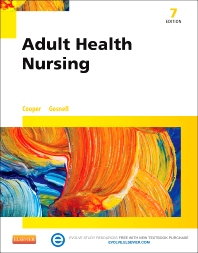
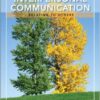

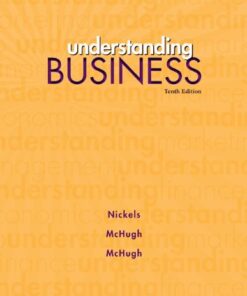
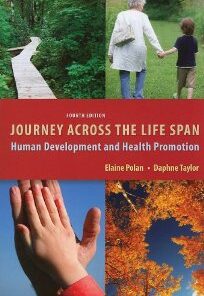

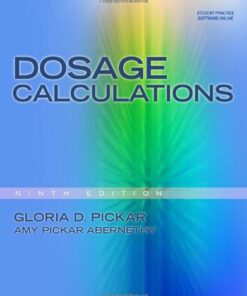
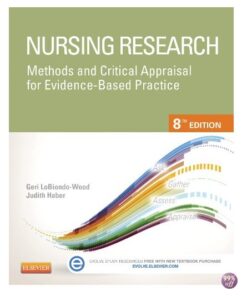

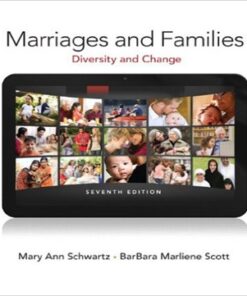
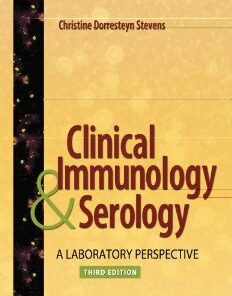
Reviews
There are no reviews yet.